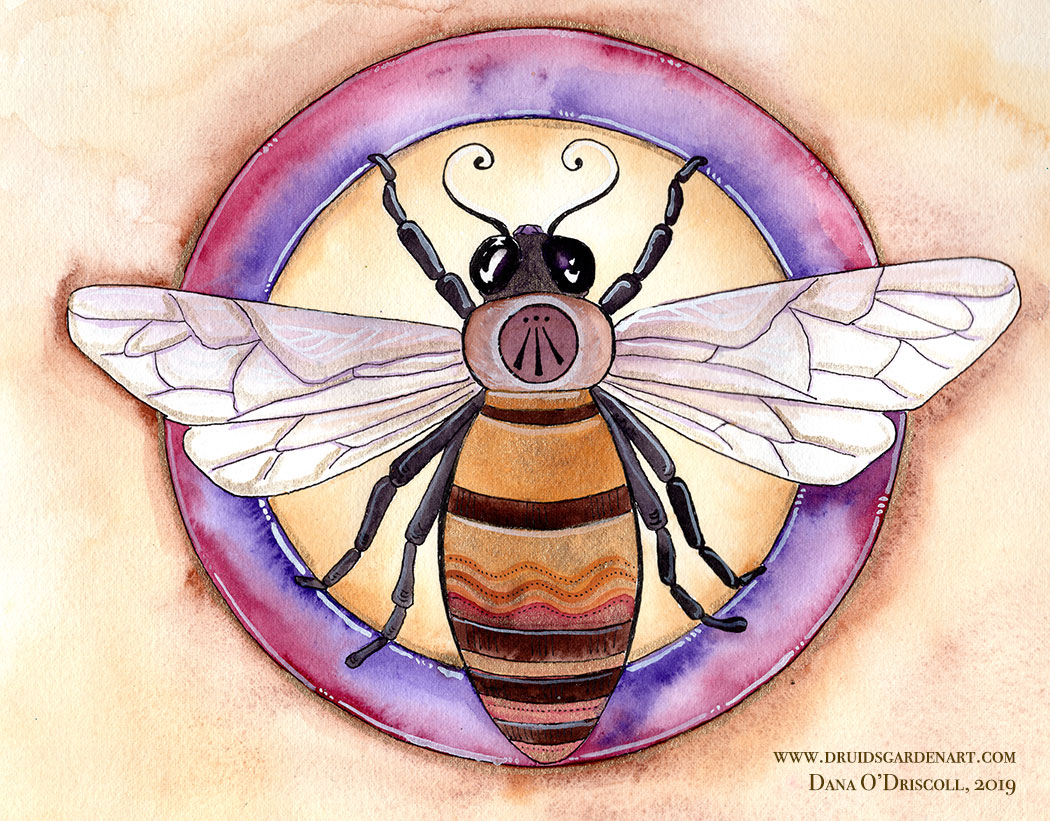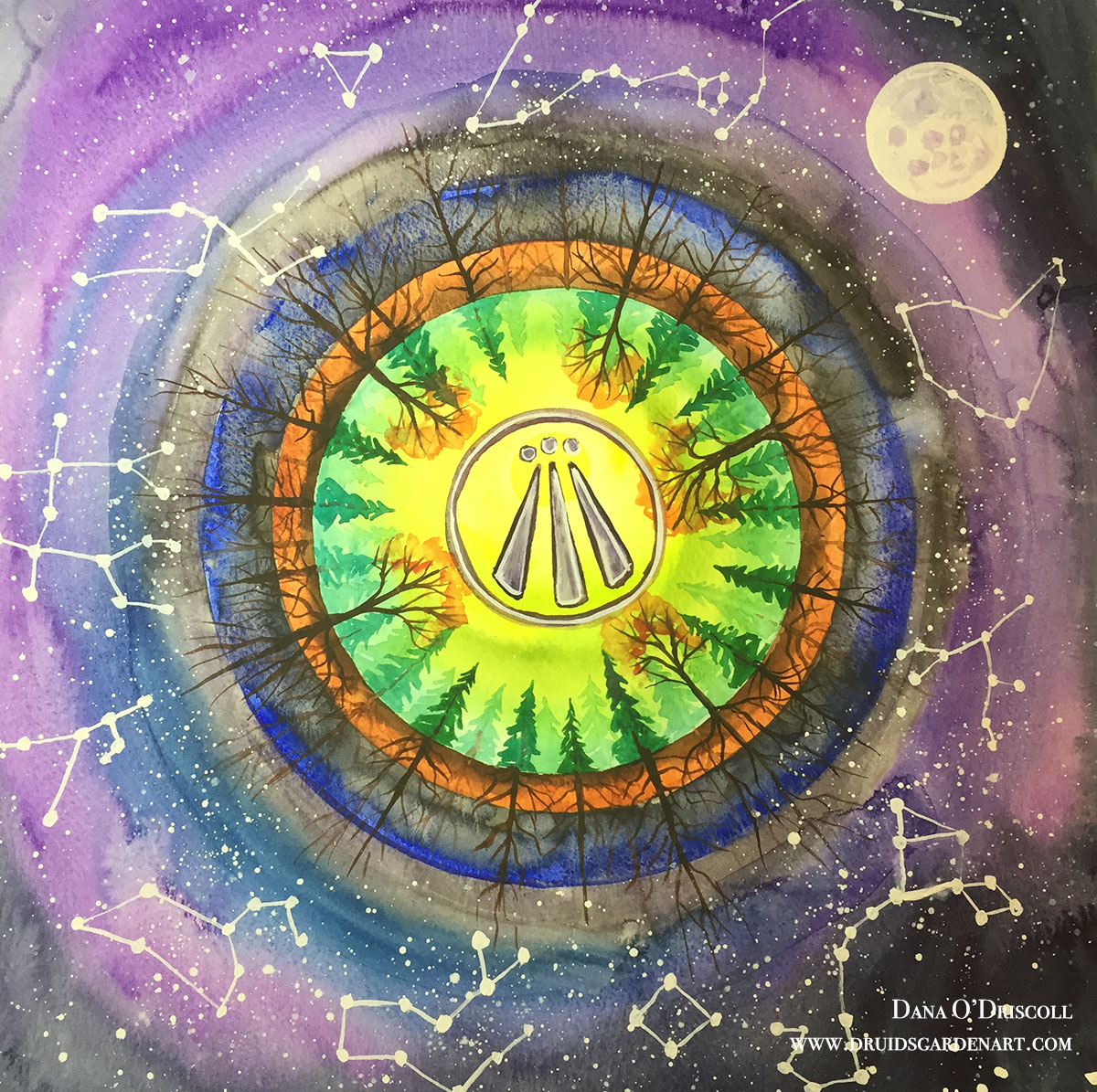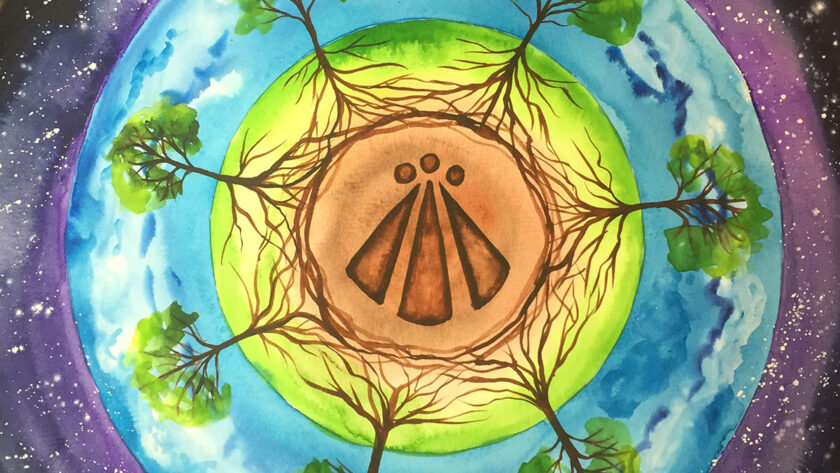The time between Samhain and Yule is always a time of deep reflection for me. As a homesteader, this represents the end of the season– the first frost happened in the week I was drafting this post, making everything curl up and die. By the time late November comes around, any major outdoor projects are complete for the year. We anticipate, even embrace, the winter months when snow carpets the ground and all is frozen and still. While in the light half of the year, I spend most of my spare time gardening, doing various permaculture projects, or just being outside in the summer. In the dark half of the year, this is when I turn to more inward-focused bardic arts, more intense practice of my magic and journeying, and learning from books of all kinds. So as we move into the dark half of the year, I’ll be spending some more time on my bardic arts and awen series of posts as that is where my mind is moving into.

Today’s post explores the ancestral connection to the bardic arts and considers how we might explore our ancient ancestors by working with their art forms and using their work as inspiration. This is part of my larger series on the bardic arts. For earlier posts, see, Taking Up the Path of the Bard, Part 1, Taking up the Path of the Bard Part II, Taking up the Path of the Bard, Part III – Practice makes Perfect, Cultivating the Awen, A bardic storytelling ritual for empowerment, rituals, and activities to enhance creativity, and the fine art of making things. Finally, you might be interested in reading my 2018 Mount Hameus research piece, supported by the Order of Bards, Ovates, and Druids.
Bardic Arts and Our Ancient Ancestors
Many ancent human ancestors practiced the bardic arts. Every culture on the planet, in addition to having language, also has many forms of bardic arts: music, storytelling, fine crafts, fine arts, drumming, singing, dance and bodily expression, and much more. Some of how we know this from archeology and the kinds of things we find in museums. For every “functional” tool, we also see one decorated or objects that are purely decorated. Our ancestors (and by this, I mean human ancestors of all kinds) painted on the walls of caves, shaped clay, wove, and used colors. They sang and told stories and danced. They practiced fine crafts and honed their skills in incredible ways–some ways which have been lost to us in the modern era. But more than what can be found in the historical record–we know this. We know this because we seem to have been evolved to create.
Some of the earliest records of art are 65,000-year-old cave paintings by Neanderthals, as reported by Nature Journal. In 2018, scientists reported cave drawings by homo sapiens that were at least 75,000 years old. The cave paintings and drawings endured over time, even when likely many of their other art forms vanished. But I’m certain that these images were not the only kinds of bardic arts that our ancient ancestors did. The oldest known instruments are the Gudi flutes, which are a kind of crane bone flute. I actually have a bamboo flute modeled in the style of the Gudi flute, made by Erik the Flutemaker. He doesn’t appear to make that one anymore, but he does make a similar ice age flute. When I play my flute (in a pentatonic scale), I wonder how similar this music might be to the ancestors. I could keep going with many other kinds of bardic arts: dancing, storytelling, fiber arts, pottery, basketry–I think you get the idea. If we look deeply into our own cultural history, and deeply back much further into prehistory, we can see that the bardic arts were clearly practiced by our ancient human ancestors.

This leaves us with at least two exciting possibilities, both of which I’ll now explore. The first is the ability to connect with our ancestors, modern and ancient, by practicing intentional bardic arts. The second is to work with their awen and be inspired by their creations for your own.
Connecting to the Ancestral Bardic Arts
The first possibility is that we can connect to our ancestors by practicing some of the bardic arts they may practice. I’ll go back to my crane bone flute for a minute to share an example. If I’m playing my flute by myself, I close my eyes before I play it and take deep breaths. I feel my consciousness stretching back through time to reach those ancient human ancestors who may have played similar instruments. Once I reach that space, I begin to play, letting whatever notes come to me in any order. Sometimes, good things happen with the music when I do this. If I am playing my flute with others, I will begin by briefly sharing what the flute is, what it is modeled after, and ask them to close their eyes and connect with those ancient ancestors. And then I play a song. I think this is quite different than just playing the flute for people–of course, people are drawn to music and love to hear it, but understanding that this flute has a deeper ancestral connection gives us that deeper experience.
If you want to explore your own ancestors (or more broadly our common human ancestors), there are a few different approaches. The first is to research the history of the thing you already do and learn about it from an ancestral point of view. For example, if you tell stories, see if you can find the oldest stories and information about how these stories were conveyed, who told them, and so forth. If you play an instrument, learn about the history of that instrument, what older versions of the instrument exist, and maybe see if you can get one (like my little crane bone flute). If you like to write, learn about etymology (the history of words) and the history of writing (which is so fascinating!) This approach is good for someone with an established bardic practice, someone who maybe wants to take their practice in a new and interesting direction.
You could also do the opposite–pick your ancestors, and then learn what you can about them and their bardic arts. Once you’ve done this, start practicing one or more bardic arts. You don’t have to go back to pre-history for this: any group of ancestors at any time are possible sources of inspiration. This, for example, is why I occasionally dabble in making hex signs. My ancestors were Pennsylvania Dutch (German) and the hex signs can still be found on barns all over my region. Once I started doing family history, finding a family bible with small charms written in it (all in German, of course), and so on, the ancestral connection to this tradition grew within me and I wanted to build some of that into my bardic arts practice. This is also why I practice pysanky (and my motivation for having so many different egg-laying birds!) and play the panflute!

Ancestral Awen as Sources of Inspiration
I shall sing of the awen, which
I shall obtain from the abyss
Through the awen, though it were mute
I know of its great impulses
I know when it minishes;
I know when it wells up;
I know when it flows;
I know when it overflows.
–Taliesin, “The Festival” from the Book of Taliesin, 13th century
This is one of my favorite poem segments, from Taliesin, who is thought in the Celtic world to be the greatest bard who ever lived. Here, he’s speaking of his deep relationship with the awen, and how he understands it, and how he cultivates it. Although he cannot speak to it directly (“though it were mute”) we can see how he knows exactly how to work with it. Taliesin is, as he says, a master of the awen. When he wrote, he was bringing that spark of awen and transforming it into poems, stories, and songs. So, too, were other practicing bards throughout the ages–some named, many nameless. Even though we don’t know all of their names, the work that they have left us still stands–in museums, in our buildings and architecture, in our stories and songs.
Another ancestor-focused practice tied to the bardic arts, then, is focusing on using historical bardic works for inspiration. Many masterful designers use this approach (I was taught a version of this approach in two different master classes teaching radically different skills–leatherwork and figure drawing). We can look go previously created works, preferably historical, for inspiration. To do this, I go to museums for inspiration. Perhaps I see a pattern I really am drawn to; I take reference photos (if photographing is allowed, and if not, I get a copy somewhere). I take walks around, looking at patterns and beauty in old buildings, old iron gates, and so forth. I combine these photos with inspiration from the natural world. I do this for a while, gathering bits and pieces of ancestral inspiration. I develop an ancestral library of sorts, which compliments my nature-based library of inspiration. Then, the next time I sit down to design something, I use those photos as inspiration.
This kind of practice creates almost like a chain of awen. The awen was sparked by some ancient bard, somewhere in prehistory. That bard inspired others, and new works were created. Some of those works remained available to me, as a modern bard, and I can draw upon their inspiration. How many previous works inspired the one I’m looking at today? How many ancestors am I touching, in finding inspiration in their own work? How many future bards may my work inspire?




Reblogged this on Paths I Walk.
Thank you for the reblog! 🙂
Hi Dana,
My article in the upcoming issue of Trilithon is a good example of the second process you mentioned. I used the 2nd branch of the Mabinogion as inspiration to write a myth of our age.
Thanks for what you are doing with your blog!
Claire
Awesome! That’s a great example. Thanks for sharing!
Reblogged this on Good Witches Homestead.
Greetings.
This was a great article. I really appreciate the insights from it, and this blog in general.
While reading it I was reminded of the folk singer Shirley Collins. In her new book, All in the Downs, she talks about how when she sings she feels the presence, or perceives the presence, of all the people who sang those songs before her, behind her when she is singing.
In this respect a bard can act as a bridge -they carry in the present the memory, songs, lore, & craft of the past- and become a link in the chain giving it to the next generation.
Here in North America, I also think of Waumpum beads in this context.
Hi Justin,
Thanks for reading and your thoughts. That’s a great concept from Shirley Collins. I feel that way too, sometimes! We have a song in my family that has really old origins and I traced it back once…and you think about all those grandmothers singing it to their grandchildren. So amazing. Songs, stories, they have their own ancestry and a life of their own.